Railway Grave (Revisited)
WE’RE BACK! The memorial seen here belongs to a railway labourer that perished on the job over a century ago. What he died building, interestingly, has similarly gone away, the track on which he toiled pulled up and the line now abandoned. As goes the person, so goes the things to which they’re connected. The setting is a most lonely one, out here on the great plains.
Troubling though, two differing back stories have come to light, a brief one from an official source, the railway and another from locals. In the spirit of fairness, we share both and presume there’s probably some truth in each. The outcomes are the same, and while there’s some parallels, many points are at odds.
Do the same…
Nevertheless one thing is made clear, that industry is dangerous, especially given the lax safety standards of the day, so that this happened comes as little surprise. We’re certain this isn’t be the only railway grave or memorial out there, but we suspect not many are marked so.
We’re along a former CPR branch, built about 1913 and closed a few years back.
The railway’s version…
Give greetings to Mytro Borys, a name suggesting he’s of Eastern European descent, who through an unfortunate incident went to the great beyond while working on the line. Some rails tumbling off a flat car did him in, a most horrific ending. He was then buried at this spot, probably within sight of where it happened, but only for a brief time (1-2 years suggested) before being disinterred and moved elsewhere. Where that was is not said. The old country maybe? Somewhere near family, this side of the world? It’s all a guess for now. A search of burial records comes us empty.
Except, we tracked down a person with a similar name (Metro instead of Mytro), who perished the same year, found buried at a cemetery up Edmonton way. It’s a close match but that he’s shown as being seventy on passing, old for a railway hand, makes us think it’s not he. The inscription on his grave marker when translated (thanks to Cyrillic reading friends) offered no clues.
Now the local account…
It similarly takes places during the building of the railway. It’s told a fellow of Polish origins perished after “a night of drinking and hi-jinks”, something then denied and disavowed by the railway. There’s mention of a hand car accident and the maimed limbs that came of it. Without a doctor to attend to his injuries the fellow succumbed and with no way to get in him back home, if his co-workers even knew where home was, the decision was made to bury him right there beside the tracks.
It goes on to say years later the family back in his home country was located but when asked, requested he not be repatriated and remain where buried. So in this version, he’s still here underground. That it’s said his name is not known, but yet his family tracked down and spoken to, seems a bit curious.
So there it is, both stories reasonable enough, yet what to do? With this comes an example of a problem encountered time and again when being a history detective, conflicting data and how to interpret or deal with it. Here we present both, for your information. Update December 23rd, 2020: Check out the comments for a third slightly different account.
No matter which is right, one, the other or be it elements of both, our respect for the railway worker should not waiver. They did it for little pay and in dangerous conditions that in a heartbeat it could steal your life away and are deserved of tribute. Not in doubt, that he died on the job and probably in a none too pretty way.
The materials used to make the memorial look to be everyday railway timbers like those used for signage. One cross is capped by sheet metal with some odd lettering, saying TYT and a bit hard to make out – CR something maybe? Update December 03, 2020. We have an answer already. “TYT in Ukrainian Cyrillic means “here” and is often the first word on headstones, usually followed by lies or sleeps, and then the persons name and other details. The second word appears to be the start of the word “sleeps” but it is missing the last character…So I would suggest someone started doing an epitaph but gave up for some reason…” Roger Waterhouse. Thanks for adding to the story! And it never occurred to us to cross-reference it like this. Kudos!
This was the original cross incidentally. A newer one was put in a few decades back, explaining why there’s a pair, the older weather beaten example placed aside to be supported by the fence. It’s told maintenance crews did upkeep here while the trains still ran. It’s a brotherhood thing.
This subject appears in a Greg McDonnell book “Stand Fast, Craigellachie!” (a wonderful volume) and it was he who helped guide us here. Given the lack of photos found, Greg’s and a few others, it’s clear few people know it exists. Even some locals weren’t aware of what was in their own backyard.
We’ll continue working to peel away the layers and should we know more, we’ll post an update here. It can be a slow process though and quite often it never happens.
As the sun drops low and the day ends, it’s hats off, a toast raised and a moment of silence for our mysterious friend. Who ever you are. You may or may not be here, but the memorial remains and then so does the legacy.
We did a post about this subject some years ago, but back then we knew nothing of the story. As an FYI, here it is: Railway Graves.
They’re saying…
”For many years my wife and I have discovered great ideas for day trips throughout Alberta and B.C. by getting ideas from Chris and Connie from Off the Beaten Path. Not only do they have a lot of research behind the trips they have taken, but they provide us with simple and accurate directions, along with great photos of what we may find on our tours. We also appreciate it when they let us know that Public access is not available or special permission is required to visit some sites. This saves us from disappointment…or worse should we accidentally venture onto Private Property. We highly recommend Off the Beaten Path!” Steve Tarzwell
More railway archaeology…
Dunshalt Bunkhouse.
Planned Railway Line Empress Alberta.
Unfinished Canadian Northern Railway Line Fort MacLeod..
If you wish more information on what you’ve seen here, by all means contact us!
Date of Adventure: August 2020.
Article references and thanks: CPR Archives, Stephen & Susan Wade, Jason Sailer & Greg McDonnell.
Please show respect if you visit this site.
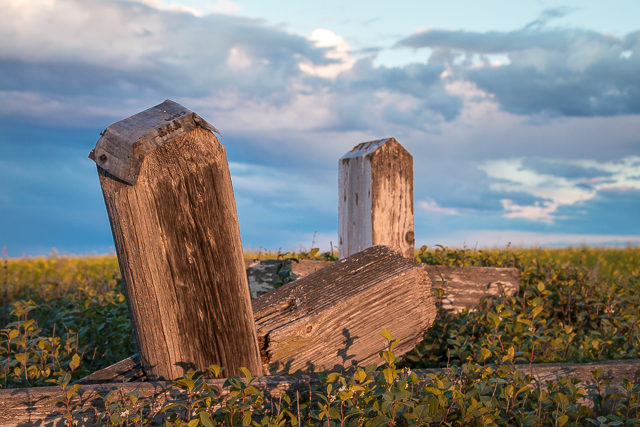
The lonely railway grave.
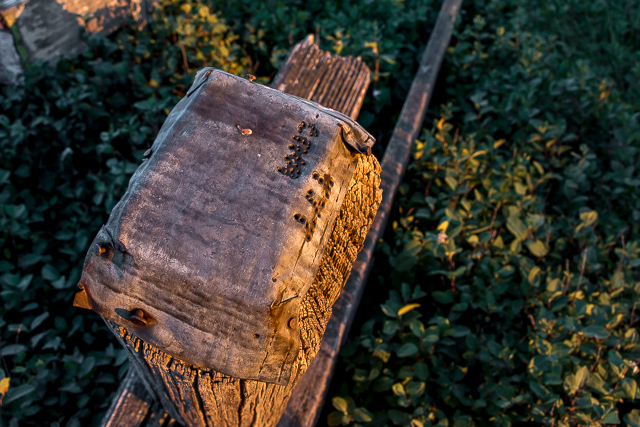
We’re not sure the meaning of these letters.
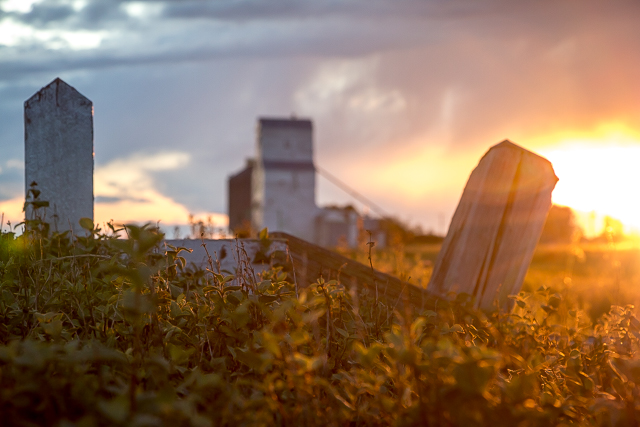
It’s said he perished building the line a century ago.
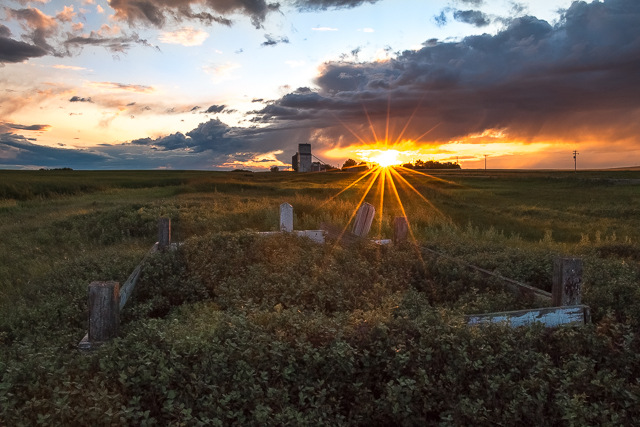
And now the track has been pulled up.
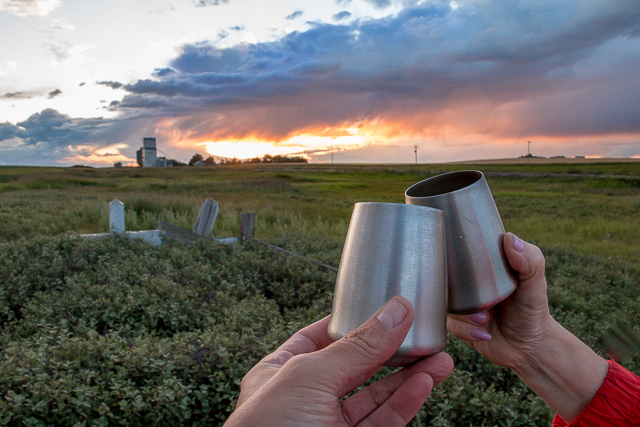
To the railway worker we raise a toast.
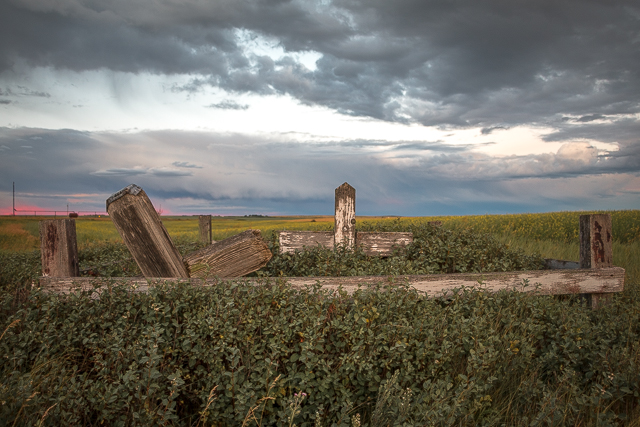
The older cross (left) & a newer replacement.

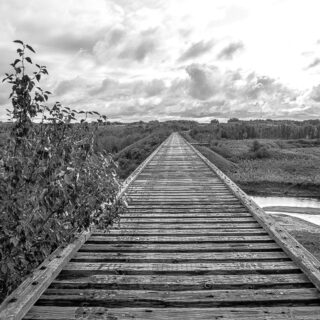
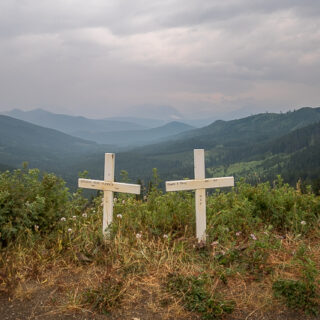
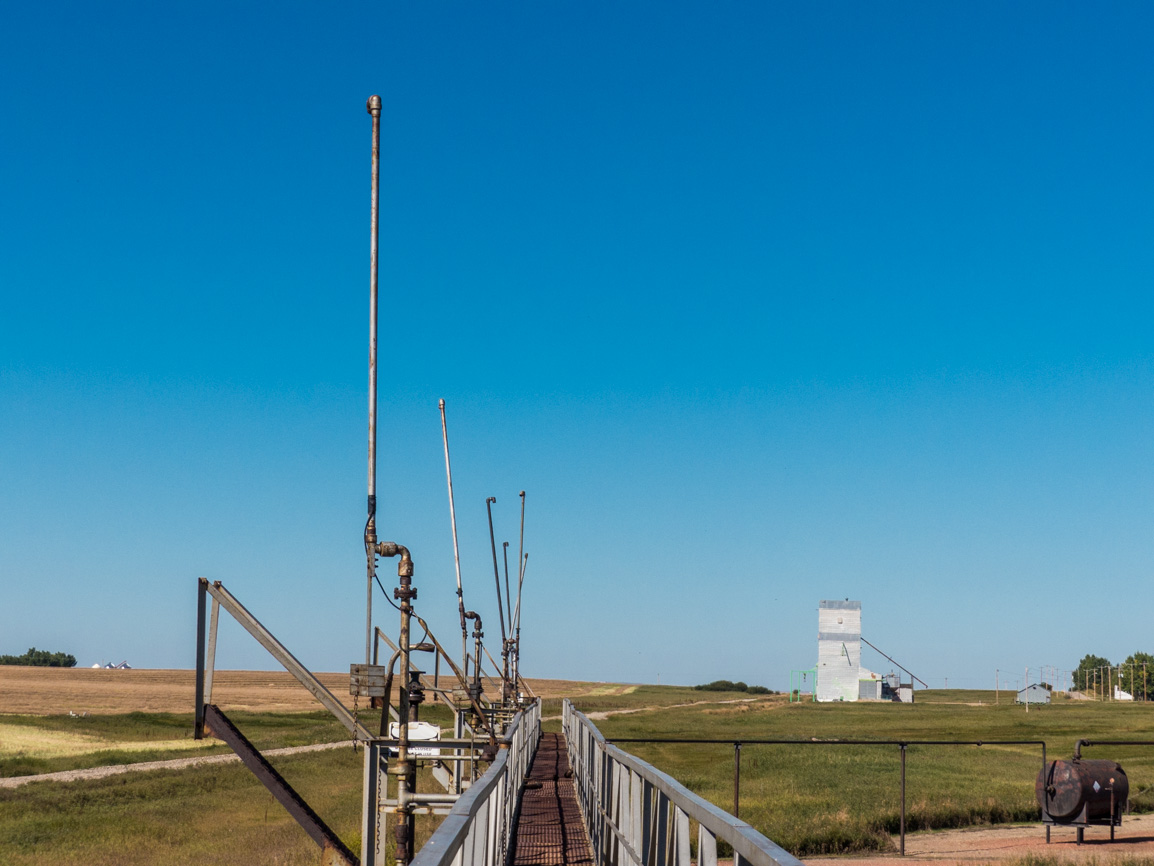
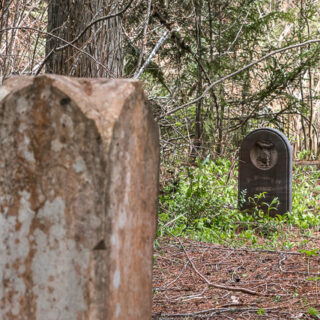
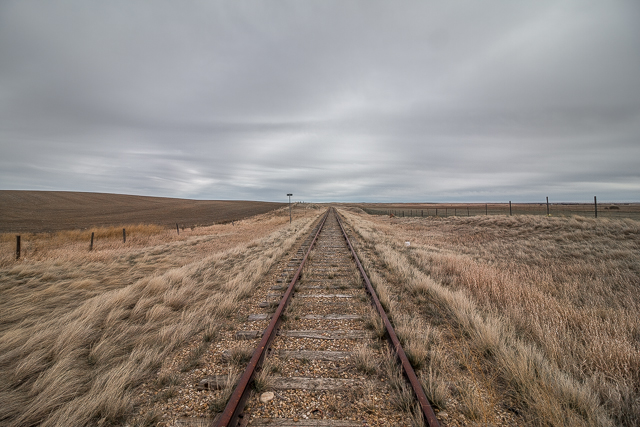
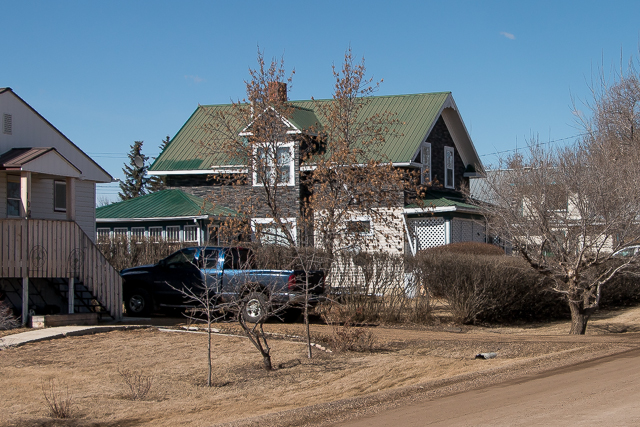
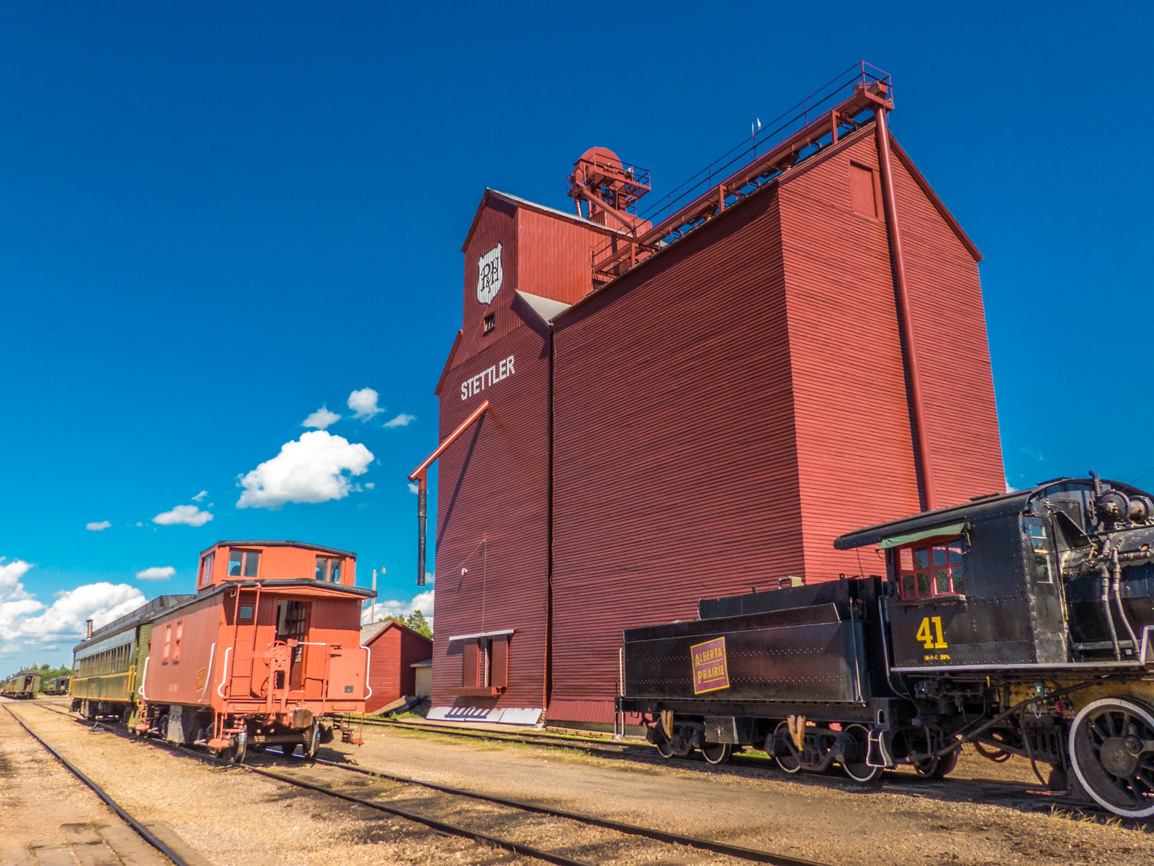
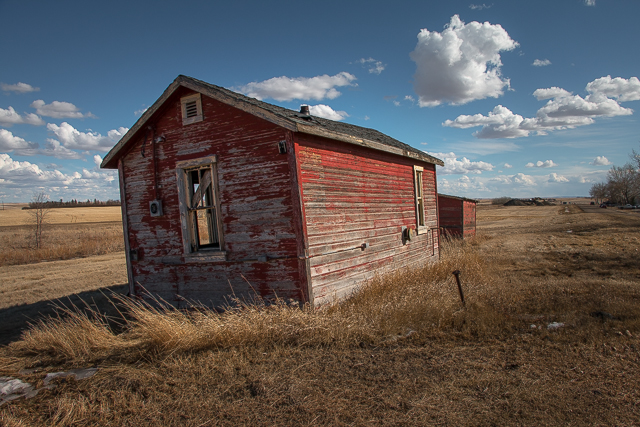
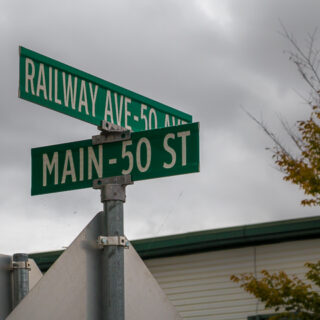
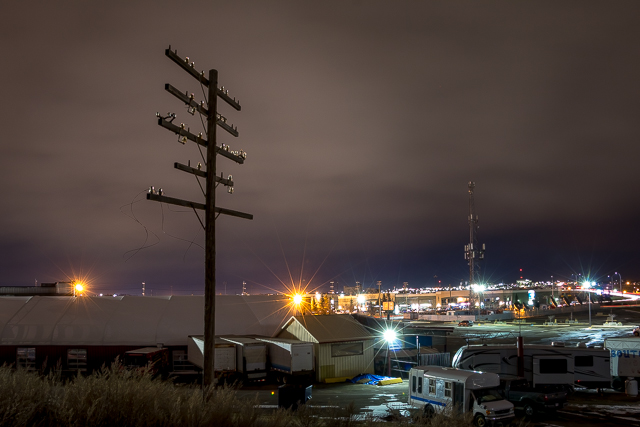
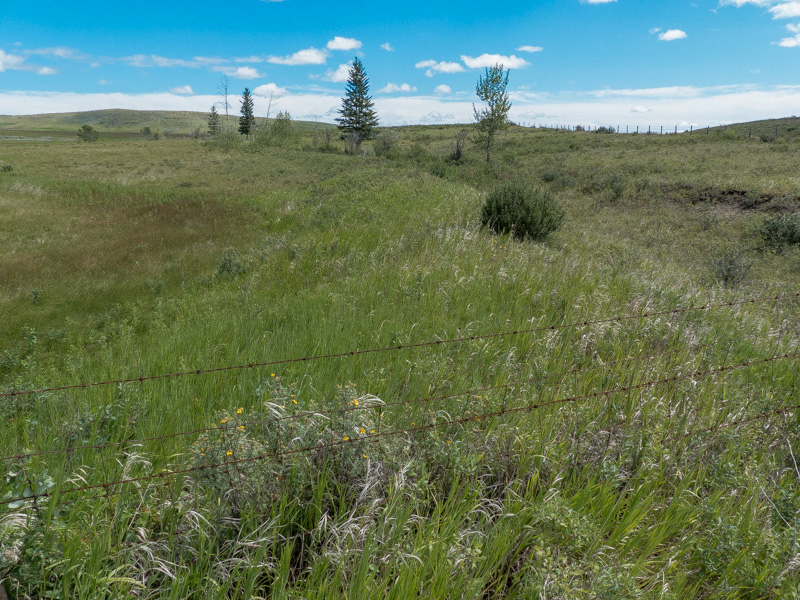
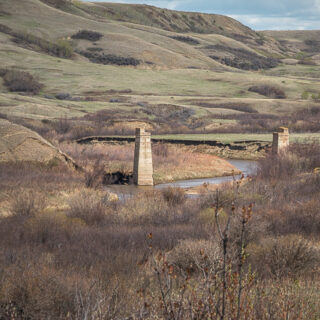







Hi, I’m Carole from the UK and I happened upon your page some time ago, as I am interested in Alberta history, culture etc, since my daughter and son-in-law emigrated to Canada.
They are now Canadian citizens and live not far from Standard.
Some time ago, on one of my annual trips to visit them, I purchased, from Standard Library, a book about it and the surrounding area and the mainly Danish people who settled there.
The book was produced by the Standard Historical Book Society, ” From Danaview to Standard”, published in 1979.
I am currently trying to piece together who these families were and where they settled.
If anyone would like information, I would try to help, using what I’ve gleaned so far!
Makes for very interesting reading when you consider Standard was once quite a busy town, due to the CPR, railway, grain elevators, and now is so quiet.
Which leads me on to your Railway graves article and Mytro Borys!
In the book, there is a piece “Mytro Borys” by someone called Norman Watson.
He says: In the summer 1912(or13″), whilst track was being laid through or near Chancellor, one evening after work a number of crew members were frolicking around at the camp with the hand cars. The chap whose remains are interred in Chancellor fell off the handcar and the hand severed at the wrist.
Dr. Farquaharson was summoned from Gleichen but by the time he arrived all he could do was to write out the Death Certificate.
Mytro came from Poland and worked as a CPR labourer,died June 21, at the age of 50 years.The CPR work crews have maintained this grave over many years.
There is a black and white picture of a tidy plot, not overgrown, and the elevators in the background, entitled “Mytro Borys grave”
When you consider Mytro was a real person, far from home, may God Bless him and may he Rest in Peace.
Keep up the Good work ,searching and writing these articles!
Hi Carole, thank you for taking the time. We have been looking high and low for that book and interestingly, we found a copy about the same time you posted this. What a coincidence. Mytro’s story differs in all accounts as to the exact details of his passing, but in this field that’s hardly surprising. In the end though, he perished on the job, that’s not disputed and that’s a sad tale. Your family in the area – Stephen and Susan maybe? Greetings from Canada.
Hi Chris, Thanks for replying. Nicola and Michael are my family. Who are Stephen and Susan?! Hope you and yours are all safe and well. What a Year! Keep up the interesting articles and have a Great Christmas!
Happy Holidays to you too. We befriended some folks that recently moved to that same area and though maybe they were one and same. I guess not. Thanks for commenting!
“Many are the dead men, too silent to be real”
More fitting words have not been said.
Great write up!
Thank you.
I like how you find these great out of the way spots!
It’s what we love, the places little visited by others. Thanks for commenting!
As usual you guys go way above and beyond! I want one of the first copies of your book when they become available. Thankyou.
That is so kind of you to say. We’ll keep everyone updated in regards to the book. Don’t worry. And we’ll sign yours if you like – like anyone wants to see that chicken scratch. Haha.
When is the book coming out? Please let us all know.
Still on schedule for spring 2021. As we know more, we’ll make announcements here and on our FB page.
Beautiful.
We were inspired this shoot.
What did they do, just bury them at the accident site?!
Sometimes that’s all they could do.
I never cease to be amazed at the stories that are still out there. Good hunting!
Sometimes you have to looks hard, but you’ll find them.
Safety equipment wasn’t all that great even half way through the 19th century. My uncle and 4 other railway workers were killed in 1959 near Sask-Alta boarder when the Speeder they were traveling to work on was hit by a truck that ignored the railway crossing sign (no flashing lights in those days).
Wow. It’s such a dangerous occupation. And it seems you never see it coming. One moment you’re doing fine, the next, you’re six feet under.
So sad. Building our railways was a labour intensive job. Looks like, from the picture, that the burial of lost workers was very simple.
It took an army of men. It’s amazing to think, but most of the lines were built using little heavy machinery. It was wheelbarrows and shovels.
The history in the west is very much untold and needs to be told!
We’re doing our best to share…
I love that the story hasn’t totally disappeared.
There’s not much of a story, but it’s a start and still something better than not knowing anything at all. And we’ll always keep digging too.
Such a peaceful place.
Indeed, so quiet and serene.
Great story, thank you for sharing.
It was our pleasure!
Looking forward to your book when it’s ready
We’ll keep everyone posted, that you can count on.
Peaceful. Beautiful pic!
Thank you!
Great article! TYT in Ukrainian Cyrillic means “here” and is often the first word on headstones, usually followed by lies or sleeps, and then the persons name and other details. The second word appears to be the start of the word “sleeps” but it is missing the last character. Here is a copy and paste from Google translate – тут спить. So I would suggest someone started doing an epitaph but gave up for some reason…
Wow, we really didn’t give them much thought – a big thanks for adding to the story. Bravo! Yes, it certainly looks like the start of an epitaph and further confirms our fellow is of Eastern European origins.
There is a private family cemetery west of Edmonton that belongs to a family named Borys. There are only a couple of graves in this plot. I’m not sure if it is an official cemetery as it is at the edge of private property. Perhaps this is where he was moved. Worth checking into…? Borys is a common surname in the Winnipeg area as well.
Cool story… thanks for sharing…
ROB
We deep-searched all burial records made available to us. But there’s so many sparsely documented, or undocumented cemeteries and burials so it’s possible he’s in one of these. Thanks for commenting Rob!
Do You know anything about the cut steel railways, standing straight up, in Ontario, where the People of Asian descent were buried? I have 1 that My Poppa Jack told Me about, showed Me, He’s almost 90 & worked the rails, as did His Father.
He told Me that The Asian People were treated very badly & barely received a wage & were basically treated as slaves & that no one recorded Their deaths/names, & Their Families back Home were never informed of Their passing To The Spirit World & nothing was written on the pieces of steel rails. I visit the One near Me often & have been trying very hard to find out Who He was & Inform His Descendants Where He is. It makes Me extremely sad that They were treated so badly & given 0 Respect in death 😔
Thank You for Any help.
Sorry, we had to step away from this site for a couple months. We’re back. Generally speaking, Chinese railway builders were concentrated in the west. None of the workers, no matter from where they came, were treated nor paid well, but indeed for some it was worse than others. If you can elaborate on this place you speak of (in private would be best), we could do some looking around. We have access to many non-public archives. Many who died along the lines being built were simply buried beside the tracks or at the nearest town’s cemetery and since many were “unknowns”, their names may have never been recorded. People of low status were thrown away without thought or concern back then. There is likely many unmarked railway graves out there.